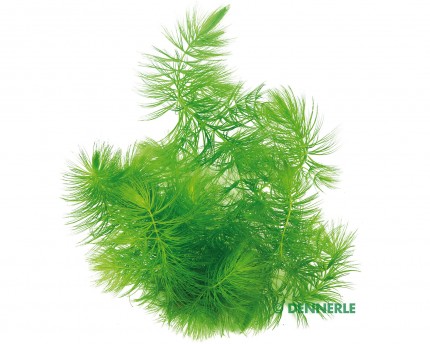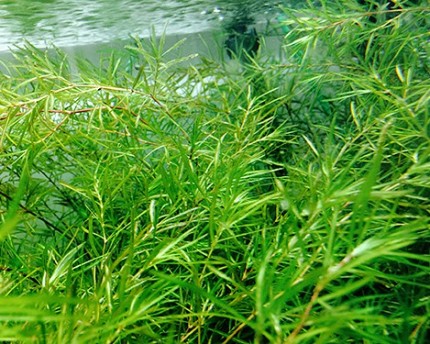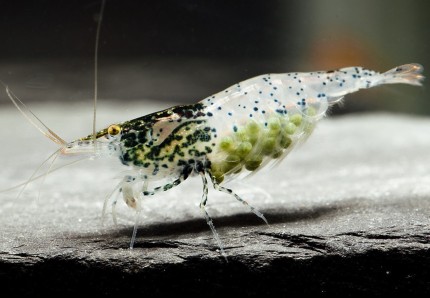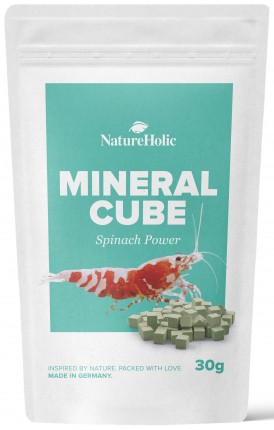| ab 1 | € 9,99* € 9,19* / Stk. | -8% |
| from 10 | € 9,99* € 8,99* / Stk. | -10% |
| from 20 | € 9,99* € 8,69* / Stk. | -13% |
incl. VAT plus shipping costs
Ready for shipment in 5 Day(s)
- Item no: 7091
Fast delivery times
All products are in stock with us!14 years of breeding experience
Let our team of experts advise you!High customer satisfaction
from over 3,000 reviews "| Coloring: | transparent |
| Difficulty: | for beginners |
| Origin: | acclimatized wild |
| Propagation: | possible in fresh water |
| Water values: | medium hard to hard |
The glass shr imp Macrobrachium lanchesteri from Thailand and Burma belongs to the large-armed shrimp. Its name comes from its unusual appearance: it is almost completely transparent and has only a few black stripes on the front body. It grows to 5 to 10 cm in size and can be successfully kept in aquariums with a volume of 54 l or more and propagated in freshwater. Females can be recognized by their somewhat more downward extended abdomen and by their egg spot in the neck, which can be seen very well in this transparent shrimp. The males are somewhat slimmer and larger (up to 10 cm, females bs 8 cm) and naturally have no egg spot. Their claws are hairy and longer than those of the females.
Socialization of the glass shrimp with not overly large, non-predatory fish is possible without problems. Unlike other large-armed shrimp, the glass shrimp's fore cla ws are not very large and therefore pose no threat to larger finned tank mates such as platies. Snails are definitely considered food, dwarf shrimp possibly. Large-armed shrimp should generally not be socialized with crayfish and crabs, as they will fight each other to the death. Since glass shrimp are group animals, at least 5 to 10 of them should be kept. In well planted and by stones and/or roots structured tanks they feel well.
The female of the glass shrimp carries 50 - 200 relatively small, greenish eggs and releases free floating larvae after 4-6 weeks. These zoeal larvae develop in freshwater. A suitable rearing food is freshly hatched artemia euplii. During the first few days, the larvae go through several stages in which they drift freely through the water. Glass shrimp juveniles do not actively hunt, so they should be well fed. At about 4 to 5 weeks of age, the juveniles spend an increasing amount of time at the bottom and eventually molt into the finished shrimp. In the community tank with fish you will not be able to achieve offspring, in this case we recommend a separate breeding tank.
Glass shrimps are omnivores and like proteins. Three times per week the administration of a suitable Protein feed is recommended. Otherwise they also like to eat brown autumn leaves, special shrimp food and all kinds of green foliage and vegetables, such as nettle, spinach and so on. Trace elements are of high importance, a Mineral food is therefore certainly appropriate once or twice a week as well.
Our food recommendation: The soft granules of the Natureholic MacroFeed consists of biologically balanced animal components, which the large-armed shrimps would find in such a way or so similarly in nature. This supports in a completely natural way the moulting, the development and a healthy growth of your fascinating large arm shrimps in the aquarium.
Our plant recommendation: Use for planting NatureHolic InVitros. These are free of snails, planarians and other unwanted co-inhabitants. Also free of algae spores, bacteria and fungi.
Expert Tip: We recommend for fish keeping the NatureHolic 3 Phase Liquid. The care set offers the best all-round protection for your animals. It ensures optimal conditions for successful breeding and keeping.
| Scientific name: | Macrobrachium lanchesteri (De Man, 1911) |
| German name: | Glass shrimp |
| Difficulty level: | suitable for beginners |
| Origin/Distribution: | Southeast Asia, Thailand and Burma |
| Coloration: | ttransparent with two black stripes on the front abdomen |
| Age expectancy: | 3-4 years |
| Water parameters: | GH 6 to 30, KH 3 to 10, pH 6 to 8, temperature 20 to 30 °C |
| Tank size: | from 54 l |
| Food: | Protein food 2 to 3x weekly, otherwise rather vegetable(Natureholic Mainfeed), mineral food 1 to 2x weekly |
| Propagation: | somewhat more complex, after four to six weeks 50 to 200 planktonic larvae hatch, which can be raised in the species tank or in a separate rearing tank. |
| Behavior: | relatively peaceful |
| Socialization: | with peaceful fish, possibly with dwarf shrimp. Not with crayfish, crabs, snails (exception: feeder snails) or mussels |
| Further information | Foliage for the aquarium + foliage list, Feed shrimp, crabs, snails & mussels correctly, 10 tips for budding aquarists |
- Item no: 7091
Entdecke die Garnelio Welt!
Garnelio gehört zu den größten Onlineshops für wirbellose Aquarientiere weltweit.
Viele Artikel gibt es exklusiv nur bei uns im Shop.































